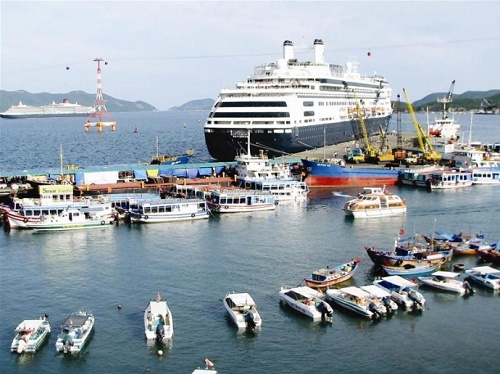Circular 50: Regulations on 13 Responsibilities of Owners of Inland Waterway Ports and Wharves
This is a notable content in Circular 50/2014/TT-BGTVT on the management of inland waterway ports and landings.

Circular 50: Article 13 Responsibilities of inland port and wharf operators (Illustrative image)
Circular 50/2014/TT-BGTVT stipulates that during the operation of inland ports and wharfs, the operators must comply with the following regulations:
1. Maintain the operating condition of the port, wharf, and mooring equipment as per the design to ensure safety; maintain inland waterway signaling in accordance with inland waterway signaling regulations.
2. Develop operational regulations for inland ports and wharfs; for passenger ports and wharfs, there must be a ticket price listing board. The operational regulations and ticket price listing board must be clear and conveniently positioned.
3. Provide lighting when operating at night, for passenger ports and wharfs there must be a waiting area for passengers.
4. Fire prevention and firefighting equipment must be sufficient in quantity and quality as per the legal standards and must be conveniently located for use.
5. Lifting equipment must meet technical safety standards and be suitable for the structure and load-bearing capacity of the facility. Operators of lifting equipment must have certificates according to legal regulations.
6. The channel leading to the inland port or wharf (if any) must comply with the technical grade of inland waterway channels, and must be regularly inspected and surveyed to ensure it matches the technical grade of local inland waterway channels.
7. For inland ports receiving foreign watercraft, there must be an inland port security plan and security assessment approved by the competent authority.
8. Assign management and operational personnel to ensure order and safety.
9. In case of leasing inland ports or wharfs, a contract must be signed with the port and wharf operator in accordance with legal regulations and fully perform obligations under the signed contract.
10. In case of terminating operations, port or wharf operators must notify the competent authority who announced the port or granted operational licenses to issue a decision to suspend the operation of the inland port or wharf.
11. Do not load goods or board/disembark passengers onto/from vessels that do not meet technical safety standards or lack the required documents; do not overload goods beyond permissible dimensions or capacity, or exceed the number of passengers allowed; fully comply with legal regulations on loading and unloading dangerous goods.
12. Participate in rescuing people, goods, and vessels in case of accidents; report and cooperate with competent authorities to resolve, mitigate accident consequences and environmental pollution (if any); comply with the direction of Harbor Authority or Wharf Management Board in rescuing people, goods, and vessels during accidents in the port and wharf waters and in flood and storm prevention.
13. Facilitate working conditions and cooperate with the Harbor Authority or Wharf Management Board in ensuring order and traffic safety in port and wharf waters.
For details, see Circular 50/2014/TT-BGTVT effective from January 1, 2015.
Ty Na
- Responsibilities of officials of the Ministry of Finance of Vietnam when they are issued Official Passports from November 19, 2024
- 06 solutions to enhance the effectiveness of social policy credit in the new phase in Vietnam
- Financial support level for the purchase and repair of transportation vehicles for the Economic - National Defense Corps in Vietnam from December 30, 2024
- Financial support levels for purchasing and repairing of medical equipment for the Economic - National Defense Corps in Vietnam from December 30, 2024
- Latest regulations on management and use of passports for officials and public employees of the Ministry of Finance of Vietnam
- New regulations on the procedures for veterinary sanitation inspection in Vietnam from January 6, 2025
-

- Responsibilities of officials of the Ministry ...
- 16:00, 23/11/2024
-

- 06 solutions to enhance the effectiveness of social ...
- 15:32, 23/11/2024
-

- Guidelines for registration and organization of ...
- 11:53, 23/11/2024
-

- Contents of audit service quality control in Vietnam
- 11:00, 23/11/2024
-

- Acts in violation of Law on Independent Audit ...
- 10:30, 23/11/2024
 Article table of contents
Article table of contents
